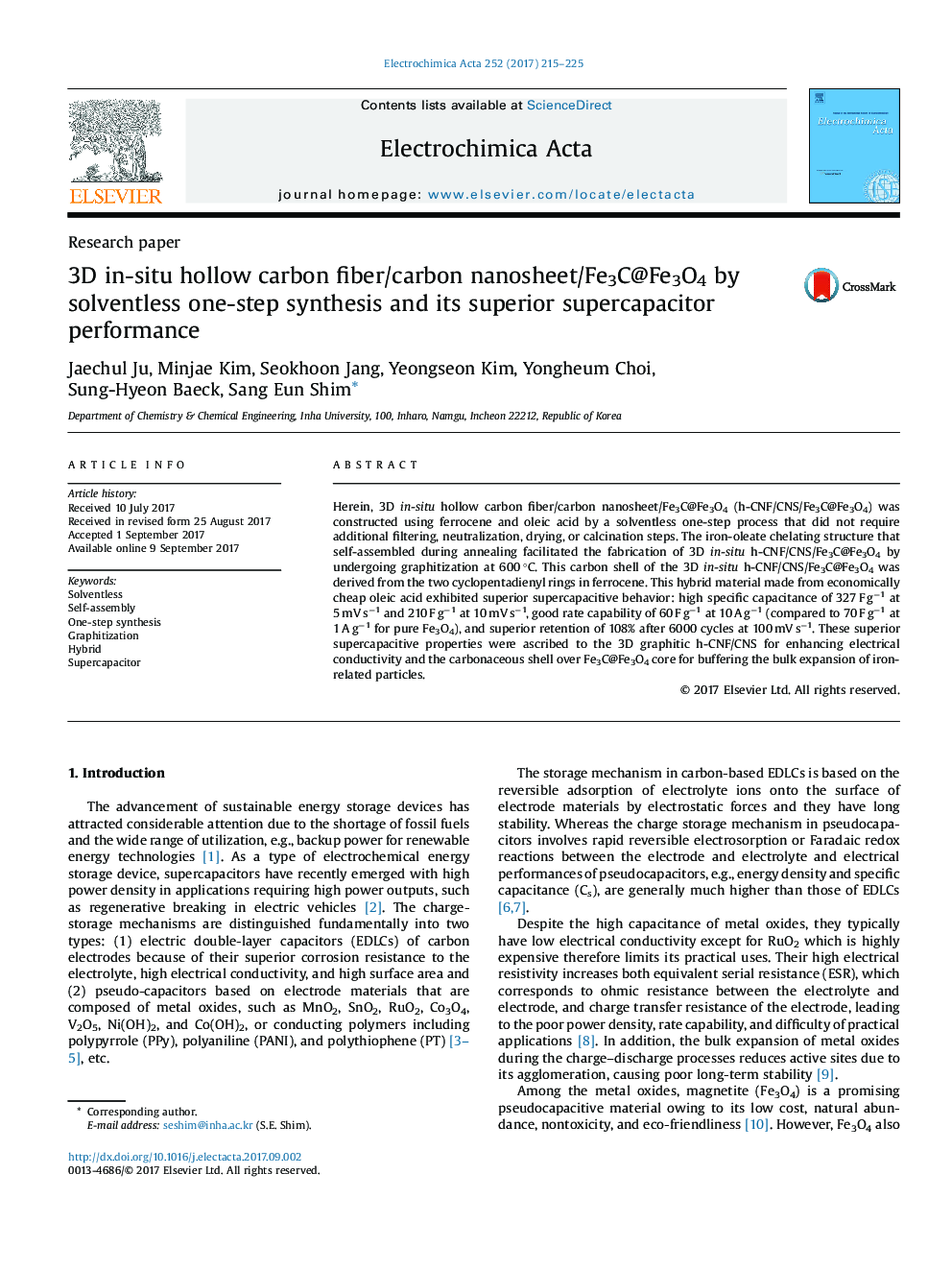| Article ID | Journal | Published Year | Pages | File Type |
|---|---|---|---|---|
| 6470259 | Electrochimica Acta | 2017 | 11 Pages |
â¢3D in-situ h-CNF/CNS/Fe3C@Fe3O4 was constructed using ferrocene and oleic acid by a solventless one-step process.â¢h-CNF/CNS/Fe3C@Fe3O4 exhibited higher specific capacitance of 327 F gâ1 at 5 mV sâ1 and 210 F gâ1 at 10 mV sâ1, and superior retention of 108% after 6000 cycles at 100 mV sâ1.â¢Carbon nanoshell comprising h-CNF and CNS well encapsulates Fe3C@Fe3O4 core materials and this sturdy structure endows high cycle stability up to 6000 cycles.
Herein, 3D in-situ hollow carbon fiber/carbon nanosheet/Fe3C@Fe3O4 (h-CNF/CNS/Fe3C@Fe3O4) was constructed using ferrocene and oleic acid by a solventless one-step process that did not require additional filtering, neutralization, drying, or calcination steps. The iron-oleate chelating structure that self-assembled during annealing facilitated the fabrication of 3D in-situ h-CNF/CNS/Fe3C@Fe3O4 by undergoing graphitization at 600 °C. This carbon shell of the 3D in-situ h-CNF/CNS/Fe3C@Fe3O4 was derived from the two cyclopentadienyl rings in ferrocene. This hybrid material made from economically cheap oleic acid exhibited superior supercapacitive behavior: high specific capacitance of 327 F gâ1 at 5 mV sâ1 and 210 F gâ1 at 10 mV sâ1, good rate capability of 60 F gâ1 at 10 A gâ1 (compared to 70 F gâ1 at 1 A gâ1 for pure Fe3O4), and superior retention of 108% after 6000 cycles at 100 mV sâ1. These superior supercapacitive properties were ascribed to the 3D graphitic h-CNF/CNS for enhancing electrical conductivity and the carbonaceous shell over Fe3C@Fe3O4 core for buffering the bulk expansion of iron-related particles.
Graphical abstractDownload high-res image (424KB)Download full-size image
